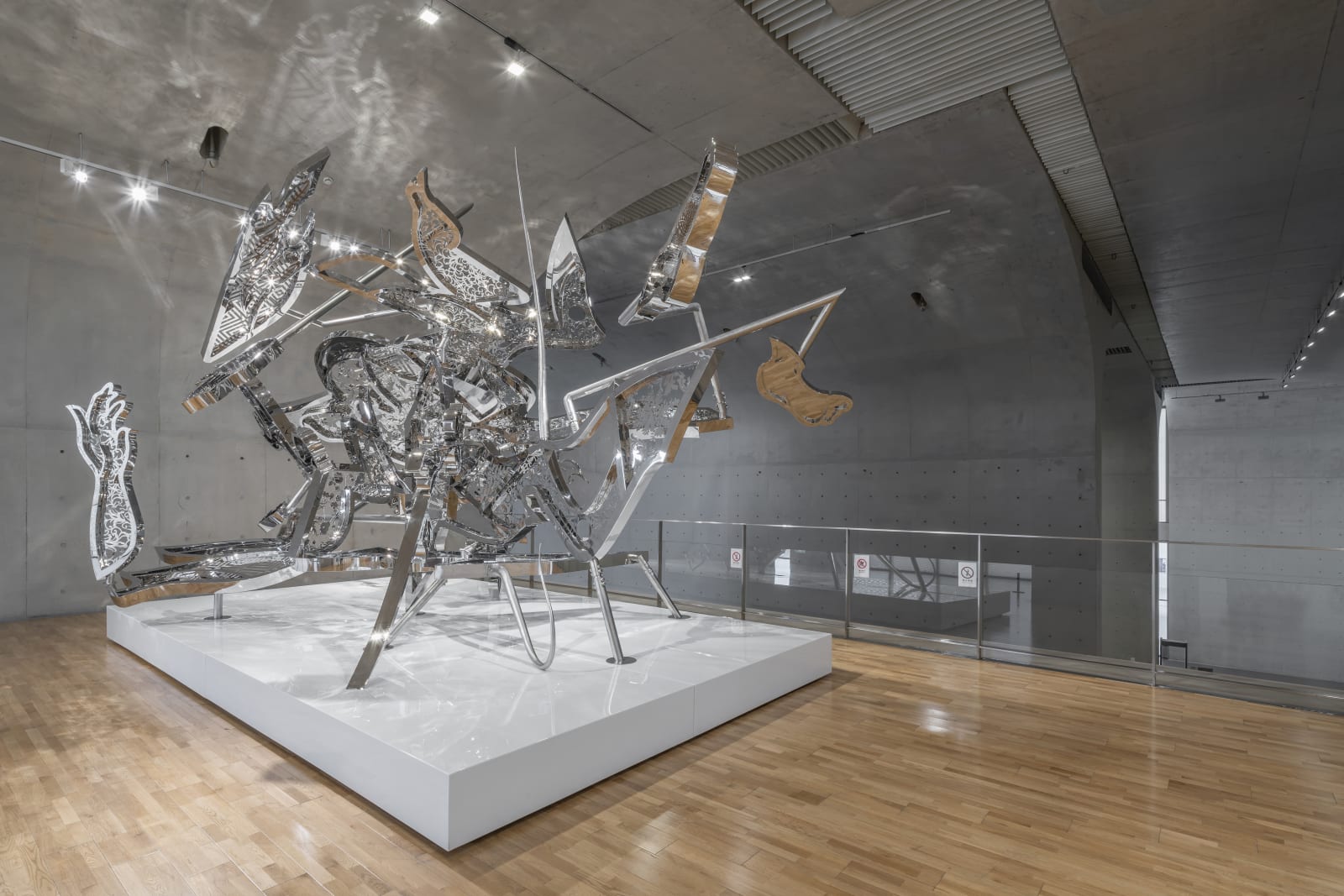Tomokazu Matsuyama Japan, b. 1976
490.2 x 749.3 x 439.4 cm
Base: 11 3/4 x 230 1/4 x 131 7/8 in (Approx.)
Base: 30 x 585 x 335 cm
Further images
The uncanny process of recognizing the unfamiliar plays out in the presence of Matsuyama’s sculptures. Simultaneously familiar and alien, they hint exquisitely at the worlds we know, not from life but from a dream. Hand welded from sheets of stainless steel and hand buffed to a mirror shine, these fragmented, labyrinthine forms are frozen in gestures that, again, relate to the “global us.” One, Matsuyama says, is a runner; another, a dancer. “Jogging is part of the Western experience. Dancing originates with Eastern culture. Both keep us mentally and physically connected,” he says.
In their distorted, curvilinear surfaces we see ourselves and wonder, like a glimpse into the Matrix, which side of the mirror is real.
That curiosity is essential to Matsuyama’s practice, as he invites us into an ever-evolving, global cultural conversation across a complex web of memories, visual languages, histories, dreams, and expectations.
This is seen dramatically with his Shinjuku Station installation Hanao-san, around which Matsuyama painted the ground with broad swaths of color to be reflected up onto the piece, or with the Meiji Shrine installation of Wheels of Fortune, which nearly camouflaged the piece, reflecting the complexity of nature across its perfect industrial surfaces. The works taking on their environments actively feels analogous to the way in which a person absorbs the culture around them, and perhaps in a hyper-literal sense is an optical illustration of how an artwork is affected by the context of its presentation.











